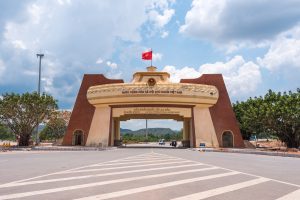The theme for Indonesia’s chairmanship of the Association of Southeast Asian Nations (ASEAN) in 2023, “ASEAN Matters: Epicentrum of Growth,” aims to validate Southeast Asia’s status as an epicenter of economic growth. It also recognizes that maintaining economic growth necessitates ongoing efforts to internally integrate ASEAN’s ten economies and externally integrate them global partners.
External integration has proceeded faster than internal integration, according to several key indicators. ASEAN countries increasingly rely on trade and investment with non-ASEAN countries rather than among themselves. Such a dependency on external partners is probably inevitable, but ASEAN should not become overly reliant on a single external partner.
ASEAN has signed a number of ambitious agreements to encourage internal integration. The ASEAN Trade in Goods Agreement (ATIGA) of 2010 reduced intra-ASEAN tariffs to 0.2 percent in 2017. The tenth package of the ASEAN Framework Agreement on Services was agreed upon in 2018 and covers broader sub-sectors of services. The ASEAN Agreement on Electronic Commerce entered into force in December 2021. The development of an ASEAN Digital Economy Framework Agreement is high on the bloc’s agenda. The ASEAN Comprehensive Investment Agreement (ACIA) was signed in 2009 to position ASEAN as a preferred production and investment hub.
Nevertheless, the share of intra-ASEAN trade and investment has been steadily declining. Over the period 2012-2021, the intra-ASEAN merchandise trade increased by 17.3 percent, compared to 40.2 percent for extra-ASEAN trade, and its share of total trade fell from 24.4 percent to 21.3 percent. Intra-ASEAN trade in services fell from 18.8 percent to 11.7 percent, and intra-ASEAN foreign direct investment (FDI) fell from 20.4 percent to 13.1 percent of the total.
The trend is not indicative of a flaw in ASEAN’s economic agenda; it is very much an implicit goal of the various ASEAN agreements on economic integration. For instance, the goal of ATIGA is to create free flows of goods for intra-ASEAN supply chain-related parts and components, for further manufacturing and export by member states to other parts of the world. ACIA provides benefits to ASEAN investors and ASEAN-based foreign investors through non-discriminatory investment liberalization. Increasing intra-ASEAN trade encourages inward FDI, and increasing FDI stocks encourage extra-ASEAN trade in much greater volume and value.
Six ASEAN Plus One trade agreements with China, Japan, South Korea, India, Australia-New Zealand, and Hong Kong have helped expand extra-ASEAN trade. The Regional Comprehensive Economic Partnership (RCEP) will further integrate Southeast Asia’s economy with that of East Asia and the Pacific (China, Japan, South Korea, Australia and New Zealand).
RCEP and ATIGA both use Regional Value Chain 40 percent, a widely used threshold for trade in goods, allowing ASEAN producers to form supply chains with either ASEAN or non-ASEAN RCEP producers in order to get preferential tariffs when exporting goods to RCEP countries. This could further reduce intra-ASEAN trade, which is one of the reasons the 10 ASEAN member states have been negotiating the upgrade of ATIGA since March of last year.
Amid the outside powers that trade with ASEAN, China’s economic dominance has been growing significantly. As a share of ASEAN’s total trade, ASEAN-China merchandise trade increased from 13 percent in 2012 to 20 percent in 2021, far outpacing the United States (11 percent), the European Union (8 percent), and Japan (7 percent). The RCEP will further boost ASEAN-China trade further. In the first half of 2022, China’s exports to ASEAN grew by 16 percent, while its imports grew by 5.5 percent.
FDI from China to ASEAN is also increasing, though it remains a smaller share of the total (7.7 percent in 2021) than FDI from the United States (22.6 percent), the European Union (22.6 percent), and Japan (14.8 percent). Nonetheless, China was the largest FDI source in certain ASEAN countries and the second largest in Indonesia last year.
China’s investment strategy in ASEAN infrastructure connectivity is based on the Belt and Road Initiative, which in 2019 was synergized with the Master Plan on ASEAN Connectivity 2025. February 7 saw the launch of the China-Laos-Thailand round-trip train, which takes 55 hours to travel from Kunming to Vientiane and on to Bangkok and back again. This new cold chain container channel is expected to further boost trade between China and ASEAN member states.
Chairing ASEAN this year, Indonesia can play a critical role in narrowing the external integration imbalance and deepening ASEAN trade and investment relations with a diverse range of partners. Indonesia can push for the signing of an upgraded ASEAN-Australia-New Zealand Free Trade Agreement, as well as the advancement of the U.S. government’s Indo-Pacific Economic Framework for Prosperity and the commencement of ASEAN-Canada FTA negotiations.
Indonesia should also work hard to complete the Indonesia-EU Comprehensive Economic Partnership Agreement (IEU CEPA). Given the comprehensiveness and high level of ambition of IEU CEPA, which covers 16 areas of negotiation, this is a tall order. The 13th round of negotiations, which was convened on February 6-10, was a critical test of the prospects for accelerating the completion of the IEU CEPA by the end of 2023.
Singapore and Vietnam have implemented trade agreements with the EU. A successful conclusion of IEU CEPA would inspire Thailand, Malaysia, and the Philippines to resume negotiations on similar agreements. Bilateral FTAs between the EU and ASEAN countries will serve as building blocks toward a future EU-ASEAN agreement. The FTAs will help pave the way for a more balanced external integration of ASEAN.

































